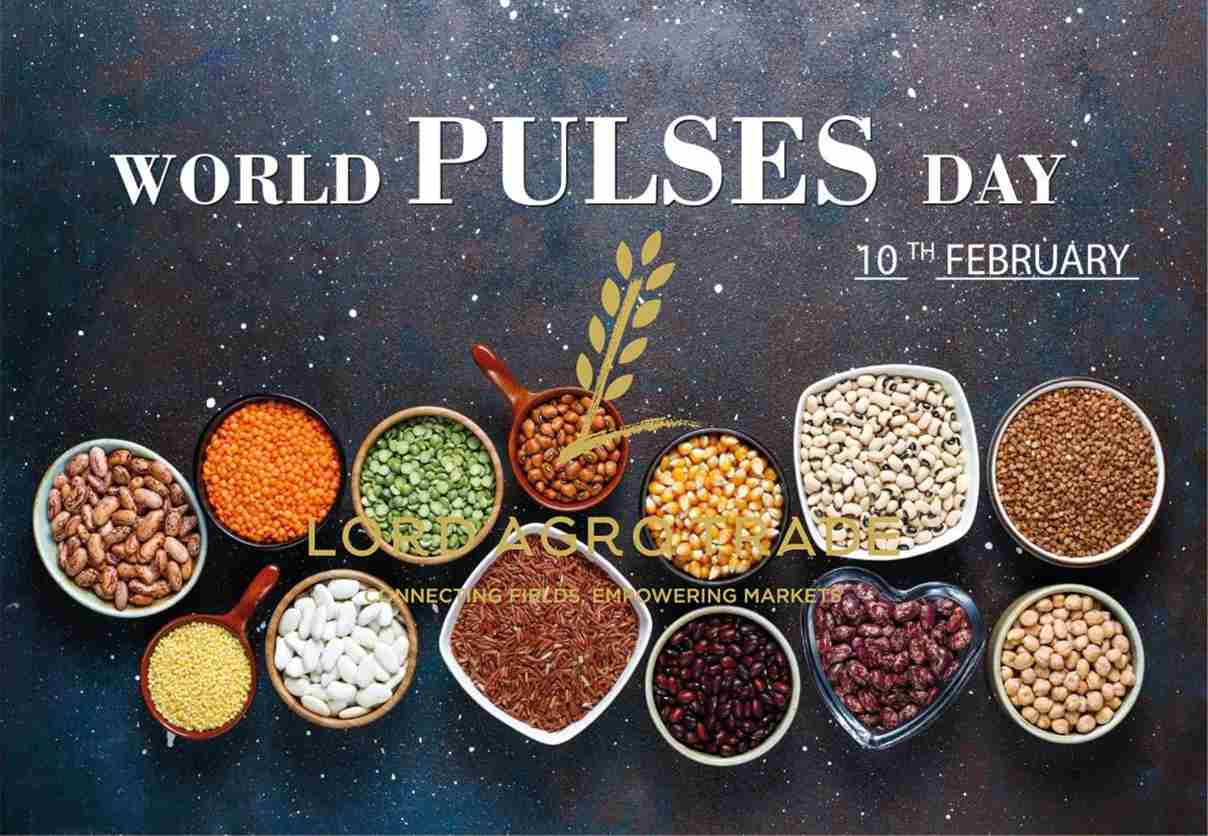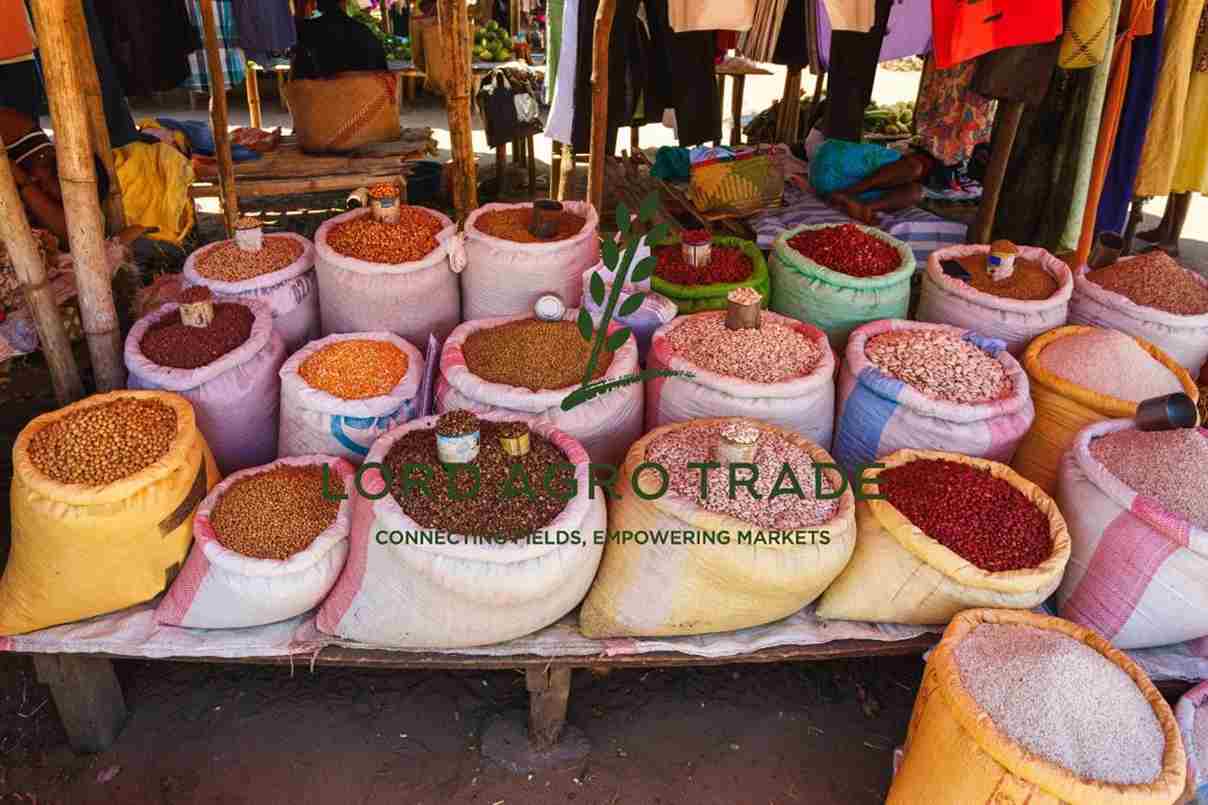Gulfood
17 To 21 FEB 2025 | DUBAI WORLD TRADE CENTRE
We’re excited to see you at Gulfood 2025!
Gulfood
17 To 21 FEB 2025 | DUBAI WORLD TRADE CENTRE
We’re excited to see you at Gulfood 2025!


World Pulses Day 2025, is an international event celebrated every 10th day of February, initiated by the Food and Agriculture Organization of the United Nations. This day would thus create awareness of the important role played by pulses vis-à-vis healthy nutrition and the welfare of the people, and even greater involvement by them in agricultural development to realize a future amidst a healthy environment. Pulses like beans, lentils, chickpeas, and peas have very high densities of plant proteins, vitamins, and minerals and therefore can assist in healthy nutrition, immune strengthening, reduction of cholesterol, control over blood sugar, heart health, and digestive functions.
Such an article would aim to update information about the nutritional values of pulses, provide them with tips for diets that include them, and increase consumption of such foods. With that approach, citizens can use pulses in daily meals and have a variety of positive impacts on individual and community welfare.
In zeroth place, you do not understand what this means. Why blinking works, why blushing switches overface over to blushing and heart start beating faster. World Pulses Day honors the importance and value of pulses, which are seeds harvested from legumes in the family genus Fabaceae. His words felt very soothing and relaxed. These seeds are collected in their dry state, which separates them from other legumes, beans, soybeans, peanuts, etc, which are grown predominantly for oil and not food.
The main pulse crops include:
Lentils are small lens-shaped seeds. They come in numerous colors, including green, brown, and black. These cook very easily, provide the most versatility in cooking and are especially used for soups, salads, and stews.
Chickpeas, or Cicer arietinum, are better known by their other name, Garbanzo beans. These large, round leguminous seeds are of earthy color and abound in dietary fiber, protein, and numerous vitamins and minerals.
Beans, or Phaseolus vulgaris, include popular types like navy, kidney, cannellini, black, and pinto beans. They are used most often-times in chili, stews, or even desserts for their hearty, thick consistency.
Peas, or Pisum sativum, are available either dry or fresh; the dry peas find their way to soups and fresh peas claim their place in salads as side dishes.
Another kind of pulses like lentils, black-eyed peas, mung beans, etc., makes a different taste and texture for culinary purposes, adding healthier diets and celebrating Global Pulse Day.

These and others are very nutritious foods, and so are pulses. They have Nutritional Ranges of Pules. Pulses Are High in Plant-Based Protein: an ideal protein, vital for the growth and recovery of tissues in the body: “Are very helpful to vegetarians and vegans because it becomes a source of protein substitute for meat and dairy, especially,” adds another source.
Pulses are very important sources of dietary fiber: The strength of so-called pulses stands for their very rich fiber. Thus fiber is immensely important in digestion – for it tends to diminish the chance of constipation, promote regular bowel movement, and nourish the growth of bacteria in the intestines. The soluble fiber in pulses also helps slow down glucose absorption, thus relieving one of the tight reins governing blood sugar, which has a very positive bearing on diabetes control…
These vitamins and minerals include Pulses, which are bulk authorities of vitamins and minerals for bodily functions. These minerals include :
Iron: necessary for the transport of oxygen through blood and energy levels.
Magnesium: Controls functions of muscles and nerves, levels of blood sugar, and blood pressure.
Folate (Vitamin B9): is essential to cell division and growth in health; especially important to pregnant women.
Potassium: serves to regulate blood pressure and is thus very good for heart health. Low Fat: Naturally low in fat but especially saturated fats, which make them heart-friendly when consumed in a balanced diet.
Pulse is derived from the word ‘puls’, a Latin term which means ‘thick soup or porridge.’ In antiquity, it was used to indicate that pulses are usually cooked down in such dishes. Nowadays, ‘pulses’ refers to the edible seeds of different leguminous plants harvested when dried or matured; the term includes but is not limited to beans, lentils, chickpeas, and peas. Pulses do not include parts of the plants that are used as food, such as leaves and stems, and are also different from those which might be harvested at an immature stage, such as pods.

Furthermore, one of the brightest aspects into the life of this earth thus healthy pulses is that they can still make the soil quality better and support more sustainable agriculture. To explain: beans, lentils, peas, and everywhere else where pulses reside, these plants have a unique farm that to fix nitrogen in the soil, which means beans absorb nitrogen from the air converting nitrogen into a form needed for utilization by plants. This action will not only improve fertility but will also reduce dependency on these non-fioharmful products, much among which of them would cost up to a price.
And this way of growing pulse crops in crop rotation would ensure better, sustainable soil through which long-term productivity would be enhanced by reduced soil erosion as well as biodiversity contributing to more resilient farming systems. Pulses, in a way, also act on sustainable agriculture because they reduce the footprint in farming and increase crop yields.
It also means a reduction in pollution both in soil and waterways because fewer chemical fertilizers need to be injected into the farm production process, thus sustaining a healthier environment for a given community.
The growth of pulses and the consumption of pulses confer community-level economic and social advantages:
Job creation and sustenance of farmers: Pulses are relatively easier to grow and demand fewer resources than any other crop, thus creating suitability for the small-scale farmer. By incorporating pulses into their crop production, farmers can augment their income while sustaining their livelihoods. In addition, pulses’ demand creates employment opportunities in farming, processing, and distribution.
In many developing regions, pulses are farmers’ source of income and offset rural economies. Promoting the cultivation of pulses broadens the resilience of agriculture and its stakeholders from climate change and market uncertainties.
Affordable and accessible: Pulses are rated among the cheapest and most nutritious food varieties, which cover every sector of people in an economy. Their low cost and long shelf life give them credibility against hunger and malnutrition, especially in resource-poor areas. Pulses guarantee that an equally rich source of protein, fiber, and essential nutrients is available, allowing poor people in lower-income communities to meet their dietary requirements without relying on costly animal-based products.
In the context of vulnerable populations, pulses are a sustainable source of food that ensures food security. The need for the availability of affordable and nutritious meals is met through the operation of pulses. In this way, pulses become a significant solution for tackling global food security challenges, especially in areas with extreme poverty and food insecurity.

All over the world, pulses are eaten, but not everyone eats it extensively. There are some places and countries in the world where pulses are popularly taken, and they include the following:
India – India is the leading country in the consumption of pulses, particularly lentils, chick peas, and bean varieties. Pulses constitute a major source of the Indian diet, especially the vegetarian meals.
Overall, pulses are consumed across many parts of the world due to their nutritional benefits, affordability, and versatility in cooking.
By incorporating pulses into your diet, you can take advantage of their numerous benefits and keep your meals diverse and healthy.
Conclusion
Pulses, as rich sources of protein, fiber, vitamins, and minerals, play a vital role in improving community health. Regular and diverse consumption of pulses can strengthen the immune system, improve digestion, reduce the risk of heart disease and diabetes, and maintain overall health. Additionally, pulses are an affordable and sustainable food source, making them an excellent way to meet nutritional needs globally.
To reap the nutritional benefits of pulses, incorporate them into your daily diet. Use simple and delicious recipes and consistently include pulses in your meals. This not only helps improve your health but also contributes to supporting community health and the environment.